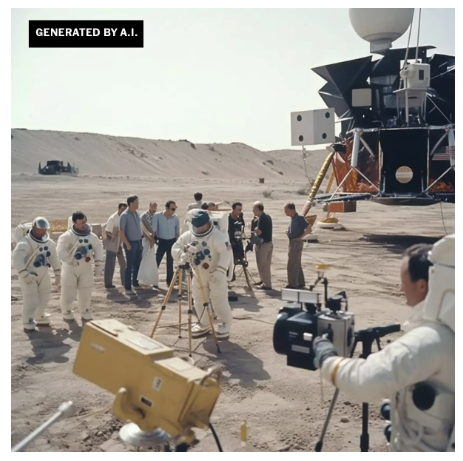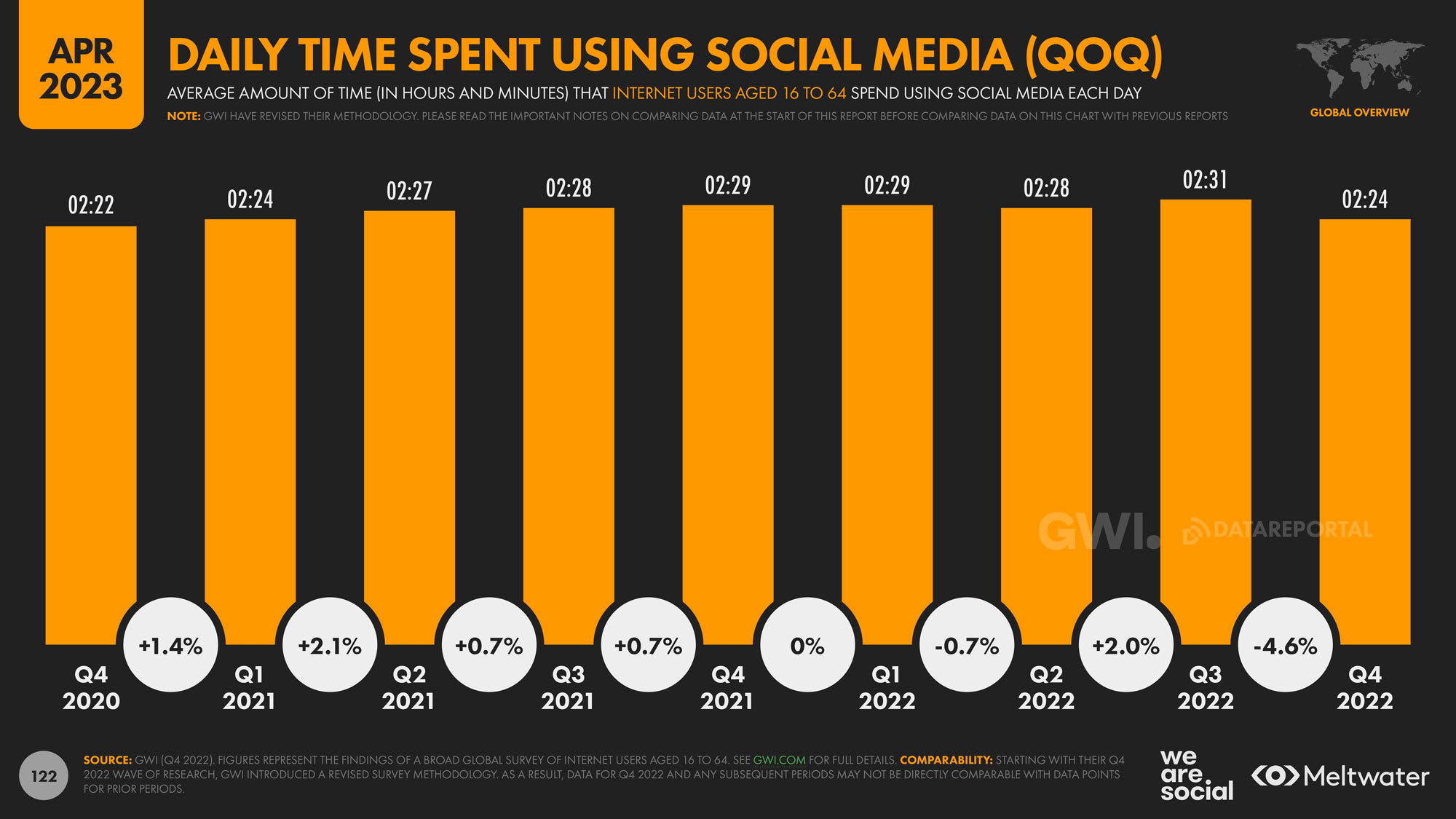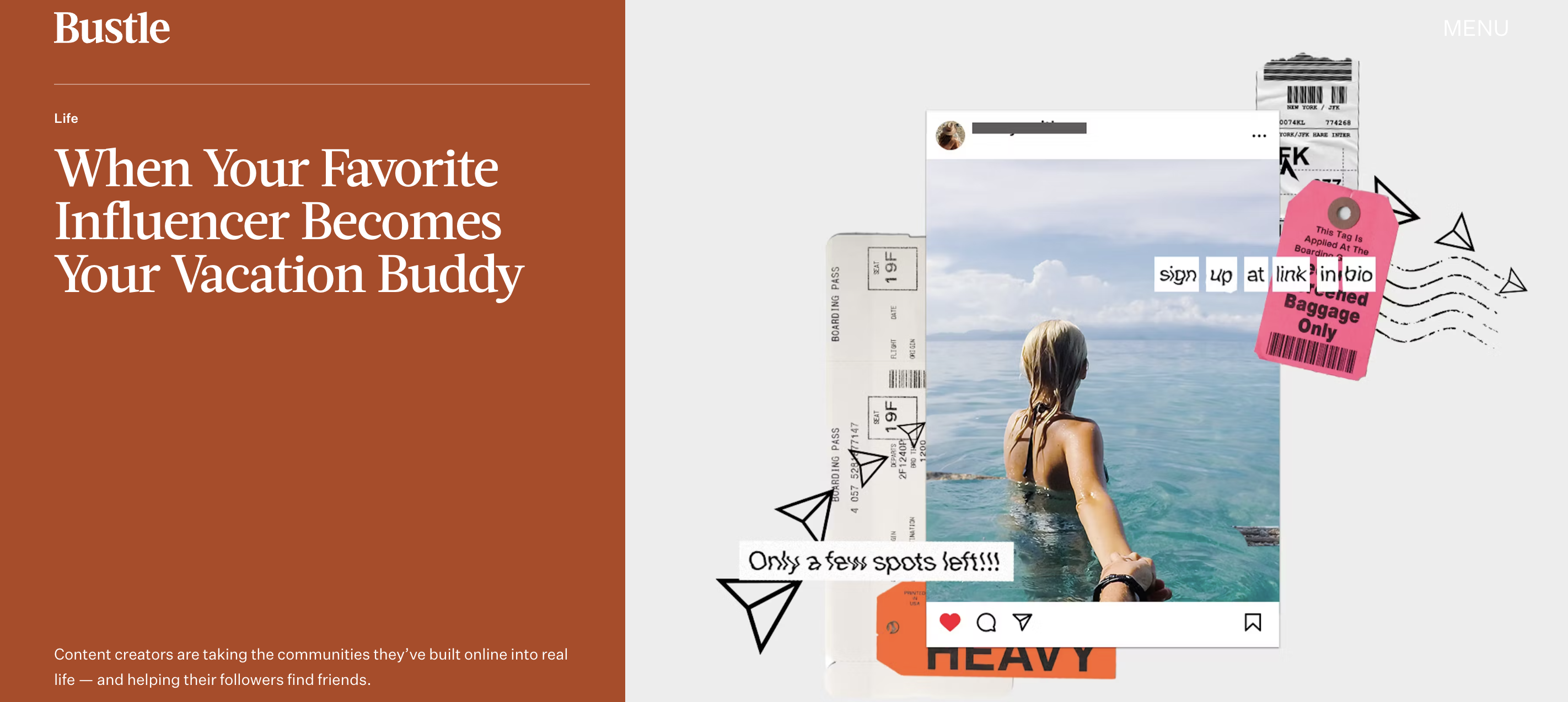


‘Mmmmm, ice cream so good, *slurp, slurp*, yes yes yes!’ As of late 2023, this semi-coherent phrase is familiar to anyone on social; its speaker, the uncanny femme-bot PinkyDoll, a household name.
PinkyDoll’s controversial fame comes from her expertise at pretending to be an NPC, or ‘non-player character’ – the automated, soulless characters that populate the backdrop of video games. And she’s not alone. From the canals of Venice to Miami parking lots, users and influencers alike have been running into walls or dancing like Sims characters, spending their offline time play-acting online worlds.
NPCs are just one example of the ways that physical and digital worlds, people and characters, reality and fiction are blending together. The jumbotron at a Drake concert is sifted through ‘crying face’ AR, making an offline event look like a TikTok filter. Offline parties and events are being themed around niche internet in-jokes, making real-life look like a live meme. The idea that there was a binary between social media and ‘real life’ was already unconvincing, but now, it’s more blurred than ever.
In today’s world, characters, communities, and behaviours born on the internet are moving seamlessly into offline worlds. And this interplay isn’t just tolerated – it’s expected.
Among social’s most fluent users, friendship and storylines don’t need to play out end-to-end online. Online worlds are expected to have much more active interplay with offline ones – whether that’s using digital communities to inform, expand, and guide offline interpersonal bonding, or using the blurred divide between reality and fiction to inspire new creative work, as with the wealth of AI content showing real-world celebs in surreal situations.
Across the board, whatever purpose social was serving – kinship, entertainment, self-expression – it’s now at its best when it’s breaking down the boundaries between worlds, not respecting them.


Offline, loneliness is endemic and making new friends isn’t always easy – but online, digital natives are highly skilled at finding niche communities, sharing in an in-joke, and bonding over fandoms. Now, users are leveraging the shared language, interests, and etiquette they’ve learnt online to construct offline communities and IRL hangs. Fans of creator @depthsofwikipedia bond online over their esoteric internet humour, but the Perpetual Stew hangout – a Brooklyn-based get-together to celebrate a TikTok in-joke about Hungarian stew – used the shared norms of internet humour to enable offline bonding.
@depthsofwikipedia more medieval behavior!
♬ original sound - Annie Rauwerda
Sites like TrovaTrip are not just helping influencers travel the world and promote new products – their communities can come along for the ride, too. Offering “group adventures in over 50 countries planned by locals, hosted by creators, and made for everyone,” the travel agent is just one example of influencers and their followings no longer maintaining parasocial distance, but instead seeking to share in authentic moments together.

Both major artists and everyday users are treating the fine line between fact and fiction as ground zero for content and creativity. Drake satirically integrated Snapchat’s iconic ‘crying face’ AR Filter into his live performance of ‘Laugh Now, Cry Later’, turning the faces in the crowd into weeping faces – generating millions of views and earned media for his blurring of real and fake, online and off. MSCHF’s Big Red Boots are too smooth to be true, designed to bring an aesthetic seen in virtual worlds into offline reality. And the 11 billion views of #NPC content, in which real-life people act like mindless video game characters, shows the widespread resonance of creative work addressing the IRL-URL blur.
@much This is genius😂😩 [via @Searra Priolo] #itsallablurtour #drake ♬ original sound - MuchMusic
Reflect digital world codes into brand stories. In the UK, Amazon collaborated with Nicki and Loczek – a creator duo famed for their uncanny portrayals of NPCs – to promote the benefits of its Prime subscription. As well as demonstrating digital cultural literacy, this blended approach of on- and offline resonates especially well with the world of e-commerce.
Embrace entertainment formats shaped by streaming audiences. Created by Spanish football legends Iker Casillas and Gerard Piqué, the King & Queen’s League is a social-first football format that’s making waves IRL. 12 top streamers like Ibai, Rivers and TheGrefg pit their teams against each other in a Gen Z-ified football league that can rake up over a million views per matchday on Twitch, selling 57,000 tickets to the final at the Metropolitano Arena in Madrid. Rather than just taking the event offline, they blended realities by blaring Twitch streamer commentary + team talks through the stadium sound system, cleverly bringing key elements of the online experience into a real life scenario for a digital-first audience.
Humanise viral moments and tell the unexpected stories behind them. To promote its new flavour, sparkling water brand DASH recruited former viral sensations to talk about their unlikely moments in the limelight. The brand conducted sitdown interviews with guests including Alex From Glasto, the Whisk Guy from Come Dine With Me, and even the friends who discovered ‘The Dress’. This confident approach not only shows how brands needn’t worry about internet trends being too niche, but also how they allow them to share more grounded, human stories that will resonate with broader audiences.